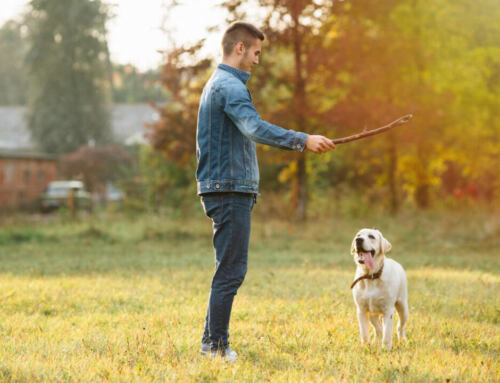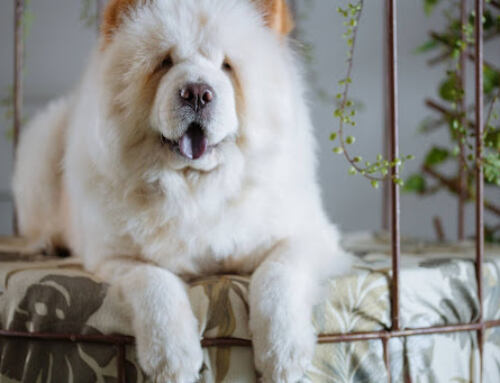The Siberian Husky is a breed of dog often used as a sled dog. This breed is a member of the Spitz family. It’s similar in appearance to the Alaskan Malamute but smaller. It has a thick double coat, triangular ears that stand up, and unusual markings.
The Chukchi people of Siberia breed the husky for sled pulling and companionship, although the breed has its roots in Northeast Asia. A breed whose ancestors endured the bitter cold and severe conditions of the Siberian Arctic, the Siberian Husky is a lively, energetic, and hardy animal. We’ve unleashed the personality very thoroughly, keep reading for more details.
Siberian Husky Characteristics
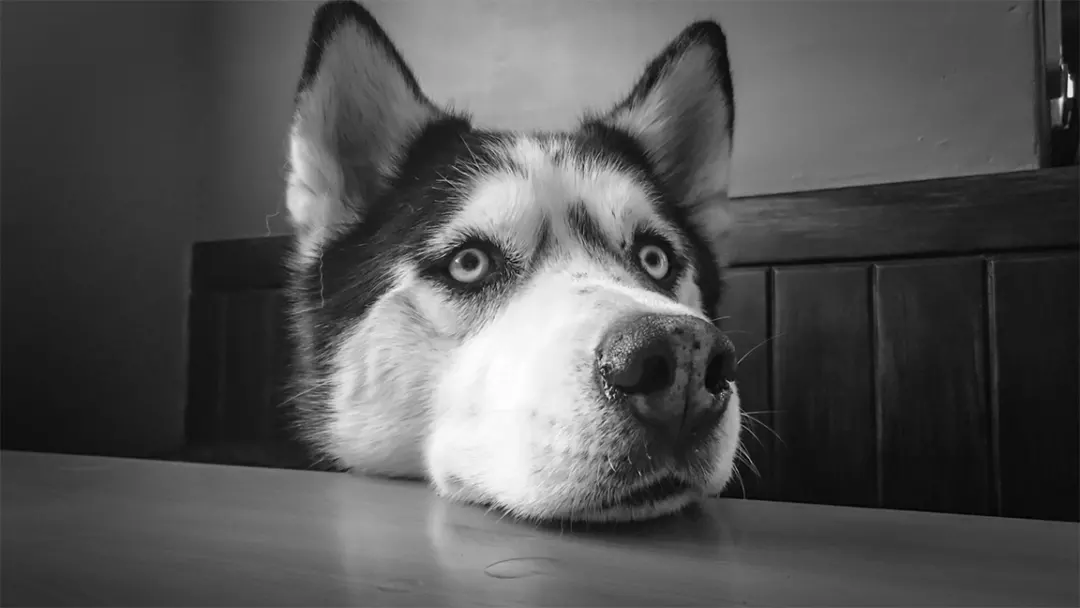
Siberian Huskies might look like wild wolves, but they are actually calm friendly dogs. These dogs are part of a pack, and they like the safety and comfort of a home and family. A Siberian husky characteristic is that gets enough exercise and will be happy to cuddle on the couch or play a gets game on the carpet.
Temperament & Personality
The Siberian husky is one of the most well-known breeds of northern dogs. These canines are known for their friendliness, intelligence, and stubbornness. They flourish when they are around people, but they need to be trained with consistency and kindness from the time they are puppies. Because they like making cool places to lie down, Siberian huskies have a tendency to dig, which is especially problematic when the weather is warm.
Siberian Huskies personality is that they are independent dogs that usually get along well with people. Their trait is that they are athletic, like to play, and can move quickly. They love being outside and need a lot of exercise every day, especially when it’s cold. Every day, you should take your husky for a walk, run, or hike.
Siberian Husky Appearance
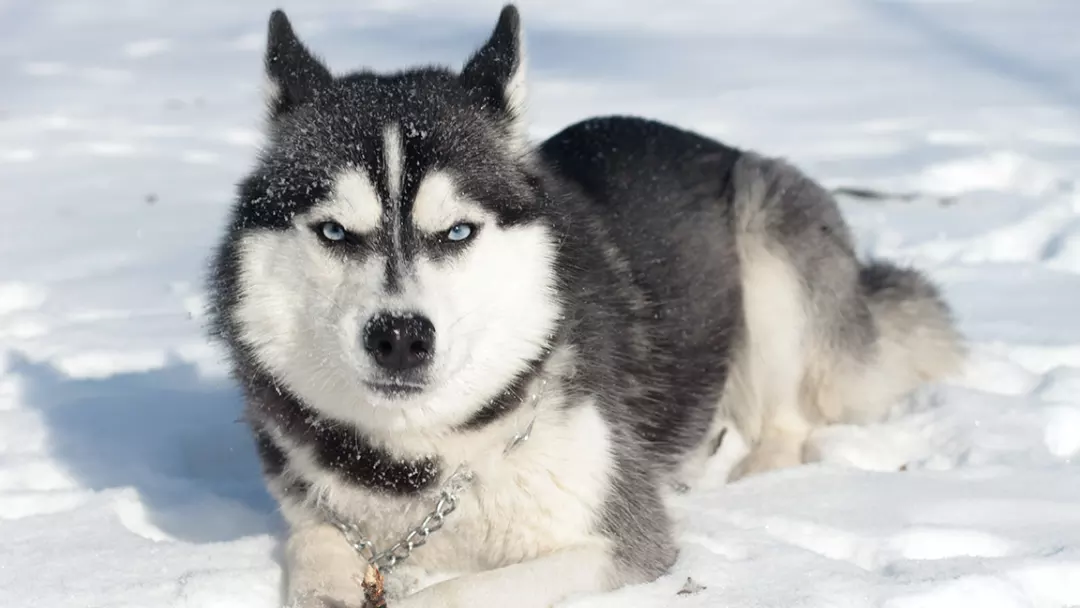
The Siberian husky is a dog of medium size, with a length that is somewhat more than its height. The individual’s height might vary anywhere from 20 to 23 1/2 inches, and their weight can be anything from 35 to 60 pounds.
The eyes of a Siberian husky may range in hue from brown to blue, and the dog’s ears are always standing straight up. The topline is level, and the neck is carried in a straight position. The thickly furred tail is sometimes held up in a sickle position, while other times it is carried straight out behind the animal.
The coats of Siberian huskies are very thick and silky, and they have a generous amount of underfur. There is a little ruff seen around the neck, but there are no lengthy fringes found on the legs or tail. The spectrum of color includes black, white, and all the shades in between. The majority of Siberian husky appearance does, in fact, have white markings, most often seen on the chest and legs.
Siberian Husky Care

The Siberian Husky is often recognized as a “purebred.” They are very low-maintenance, requiring just an occasional wash a year unless being displayed in confirmation dog events, in which case more frequent bathing is required. The coat and skin may be kept in excellent shape with weekly brushings.
There is an undercoat and guard hair on a Siberian’s body. Siberian Husky Care by using a pin brush and metal comb, you should “rake out” the old undercoat on a regular basis since it is shed twice a year. If you want to avoid foot troubles, it’s important to pay attention to the length of your nails and keep them clipped regularly. Putting on a good show in a conformation competition for your Siberian husky requires a little more careful grooming than usual.
Grooming
Their thick fur keeps them warm in subzero conditions and makes them seem royal. Siberian grooming might seem daunting to Husky owners.
Siberian Huskies are double-coated. Double-coated dogs with short or long hair need more grooming than smooth or single-coated canines. Double-coated dogs lose their undercoats annually. This natural mechanism helps them handle the heat in warmer areas than Siberia.
Grooming your husky
Huskies need less maintenance than other double-coated canines. Regular brushing is the most important part of husky coat maintenance. Attempt weekly.
A wide-toothed comb breaks up mats, then a paddle brush smooths and loosens stray hairs.
Watch for shedding
Siberian huskies shed heavily in warm temperatures. Brushing your dog more often will speed up this process and prevent mats and tangles. It will also lessen the number of weeks you spend vacuuming after your dog.
If possible, brush your husky daily. An “undercoat rake” can better remove dead hair under his overcoat.
Bathing/fur removal
Your Siberian husky never requires grooming. Based on the temperature, he will shed and re-grow his coats and lose his hair before it gets too long.
Huskies don’t require baths since they don’t create much oil. Bathe your dog once a month or less, just when he smells or mats. As his thick coat attracts shampoo and conditioner, rinse your husky well after bathing. To prevent an uncomfortable, hard-to-handle mess, brush out clumps and matting when your dog gets wet or muddy.
Their luxurious fur appears unmanageable, yet nature handles most of the hard things. If your husky’s coat is dry, apply conditioner or conditioning oils. Don’t over bathe.
Otherwise, frequent brushing and nail cuts will keep your husky comfortable and show-worthy.
Exercise
Siberians are very energetic and athletic dogs who need regular vigorous play. They thrive when given a job to do since they are bred specifically for labor. The emotional and physical health of a dog benefits greatly from regular exercise, and the link between dog and owner is strengthened via shared activities. Keep the dog on a leash, in a harness, or in a securely enclosed yard at all times since Siberians were bred to run and will take off at the first available chance.
Training
The Siberian Husky, like dogs of all breeds, does best with early introductions to other people and other dogs, as well as with basic obedience training and the development of excellent manners. Owners who want to engage in harness work with their dogs must devote countless hours to training. Some helpful literature on trial preparation is listed below.
The most effective method is making training sessions enjoyable for both the dog and the trainer. Siberians are pack animals that do not perform well when left alone for long periods of time. They need continuous interaction with their humans or with other dogs. Siberians have an insatiable need to run and should never be left alone without a leash or a safe enclosure.
Diet
Keeping the skin and hair of a Siberian healthy requires nothing less than the best dog food on the market. The working Siberian needs protein adjustments in their diet depending on their degree of exercise. A dog working in harnesses during the winter may need 32 percent protein, whereas a dog eating a diet lower in protein during the summer (about 20 percent) may be OK.
Siberian Husky History

Origin & History
Siberian Huskies are known for their compact bodies, thick coats, upright ears, and sickle-shaped tails. The Chukchi people of northern Asia developed the breed as family companions and endurance sled dogs.
The semi-nomadic Chukchi developed a sled dog to transport light cargo through huge swaths of frozen wasteland in sub-zero weather. Isolated from the outside world, the Chukchi kept their sled teams pure for centuries. They created the Siberian Husky.
In 1925, famed musher Leonhard Seppala led a relay of Siberian Huskies 658 miles in five and a half days to deliver diphtheria serum to Nome, Alaska. The frantic “serum run” in newspapers worldwide made Siberian Husky History famous. A Central Park monument honors Seppala’s last lead dog, Balto.
North American mushers retain Siberian sled dogs for joy and sport. This kind, docile companion pleases less ambitious breeders.
Siberian Husky Health

Siberian Huskies are considered “easy keepers” due to their low-maintenance dietary needs. Animals of this breed are selectively selected to rapidly transport a small payload over great distances while consuming a little amount of food, regardless of the weather or temperature.
As an added bonus, slimmer canines tend to have a longer lifespan. You should be aware of the following breed-specific health issues if you are thinking about adopting a Siberian Husky.
Common health problems
It is vital to be informed of the typical health conditions that affect Siberian Husky Health, as is the case with many animals, since many of these illnesses may be costly and time-consuming to cure. In order to make a well-informed choice about adopting a Husky, it is helpful to be aware of the most often encountered health issues in this breed.
Although the Siberian Husky Health is susceptible to typical canine ailments like hip dysplasia and eye illness, the breed as a whole is usually healthy. Although Huskies have a reputation for being able to keep their weight down on a less amount of food, they do best on a high-protein diet. By and large, they don’t carry any parasites or produce any offensive bodily odors.
Zinc Deficiency
Zinc is an essential mineral that canine bodies, like human ones, require to function at peak levels. Hair loss in unusual places, such as the feet, elbows, eyes, chin, and lips, might be a sign of zinc deficiency in Siberian Huskies. In order to prevent an overdose, contact your veterinarian before giving your pet any zinc supplements.
Hypothyroidism
The improper production of the thyroid gland, known as hypothyroidism, is a prevalent canine health issue, especially in Huskies. Although your Siberian Husky may be eating less, he may seem to have gained weight if he has this disease. There might be bald areas or patches of missing fur on his coat. Increased sleep and a general feeling of listlessness are also common.
Follicular Dysplasia
Follicular dysplasia is another issue encountered often in Siberian Huskies. Husky puppies between the ages of 3 and 4 may have this ailment, which can manifest as aberrant hair growth, canine hair loss, or patchy, contagious skin.
Follicular dysplasia is common in Siberian Huskies, and there is presently no cure. Some veterinarians may suggest the use of antimicrobial shampoos, topical lotions, or both in order to help pet owners control the condition.
Uveodermatologic Syndrome
Also prevalent in the Siberian Husky is a disorder known as uveodermatologic syndrome, which not only affects the eyes but also the skin and the nervous system. A cutaneous response associated with this disease is purely aesthetic.
Corneal Dystrophy
Siberian Huskies are prone to developing corneal dystrophy because of a genetic predisposition. Small white spots will appear in your Husky’s cornea if he is suffering from this ailment. Vision in huskies with this condition may be cloudy or opaque. Unfortunately, corneal dystrophy is not yet able to be treated.
Cataracts
Cataracts are a major issue for roughly 10% of Siberian Huskies and other dog breeds. Unfortunately, a Husky’s eyesight may be permanently impaired by cataracts that usually appear between the ages of 6 and 12 months. As a result, it’s crucial to take your dog in for frequent veterinary eye exams.
Hip Dysplasia
Siberian Huskies often suffer from hip dysplasia, one of the most serious conditions that may affect a dog. Because of this problem, the hip joint might deteriorate. It’s terrible for the dogs, and it’s quite costly to treat. Dysplasia often affects both of a patient’s hips. Educating yourself on the signs of hip dysplasia can allow you to identify issues early and lessen their impact. Since the dog is in greater discomfort, the expense of care goes up. The onset of hip dysplasia in dogs occurs at an unknown age. Around some Huskies, the illness appears in middle age, but it may also manifest itself much later in life.
Life expectancy
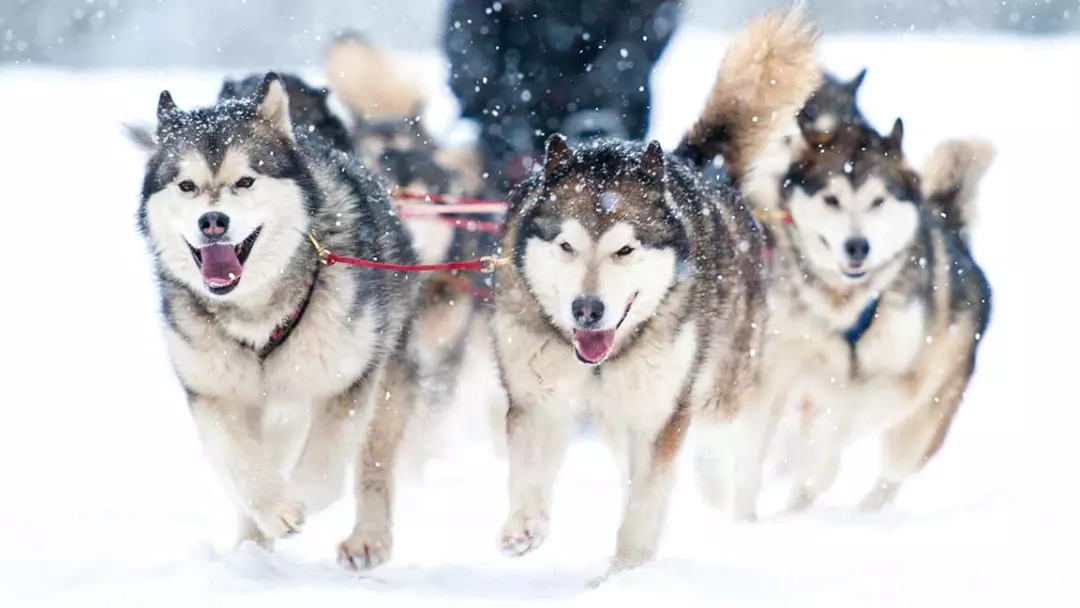
With a lifetime of 12–14 years, the Siberian Husky is a great companion animal for many types of individuals and households. However, potential owners of purebred Huskies should think about a variety of canine health issues.


